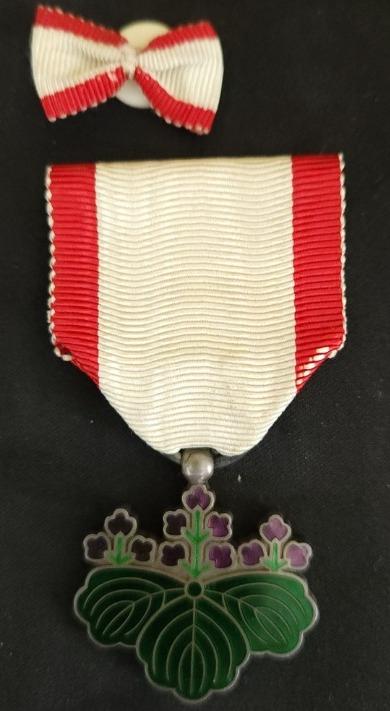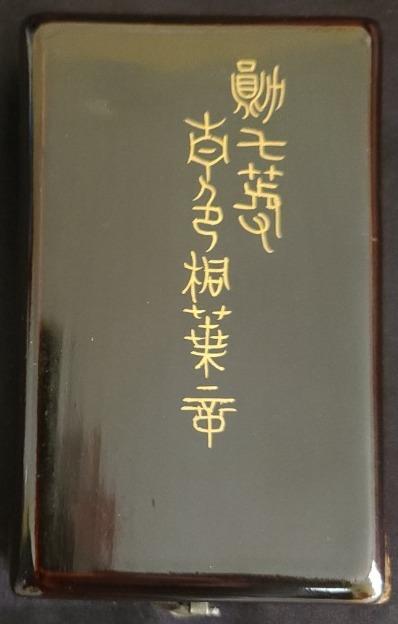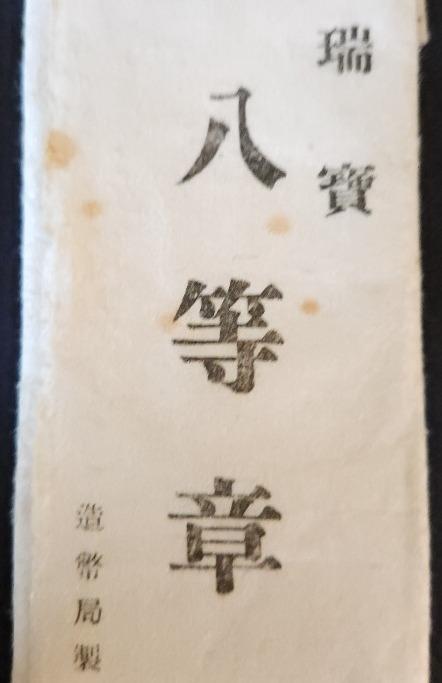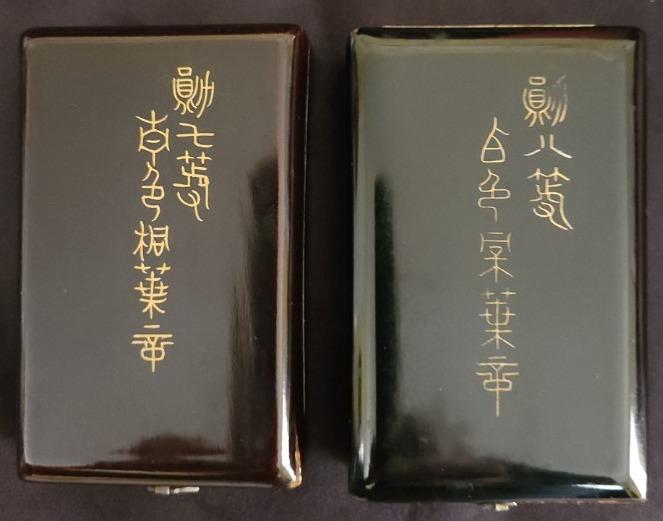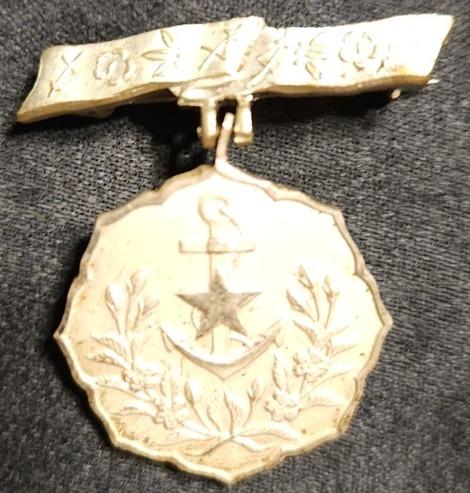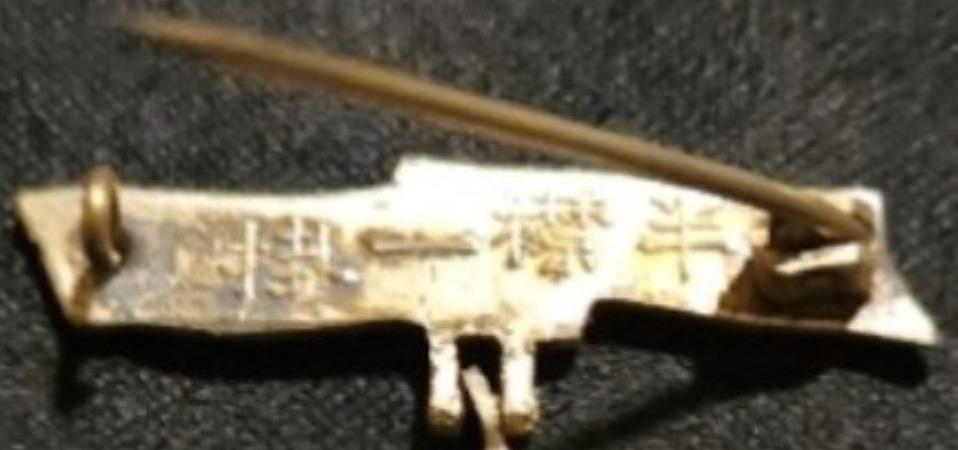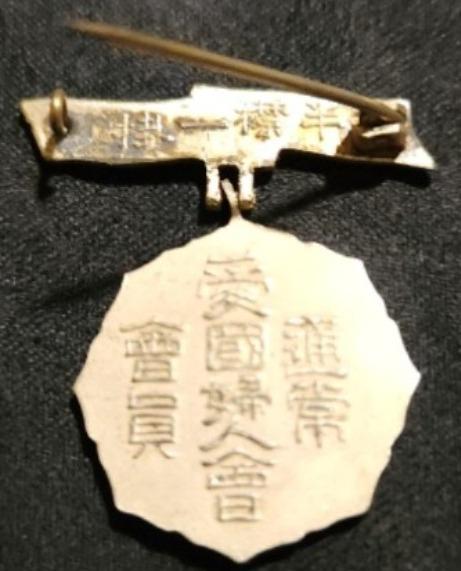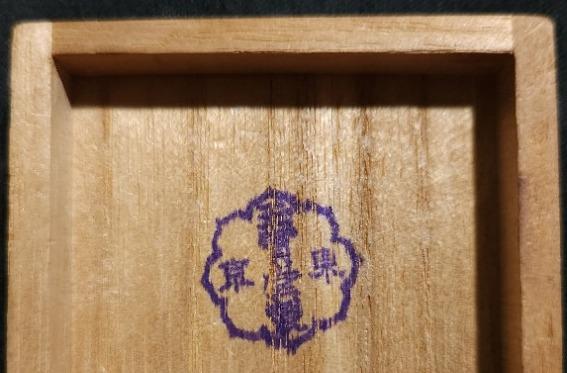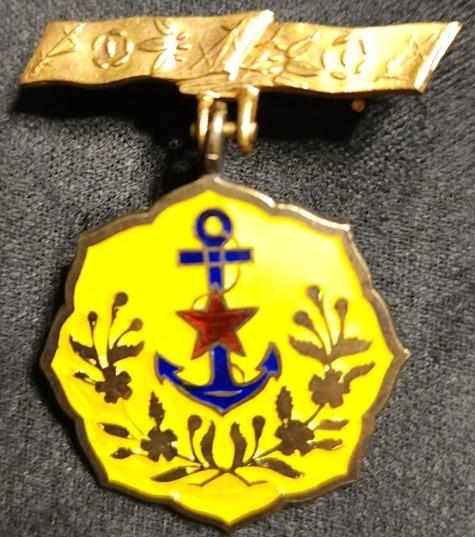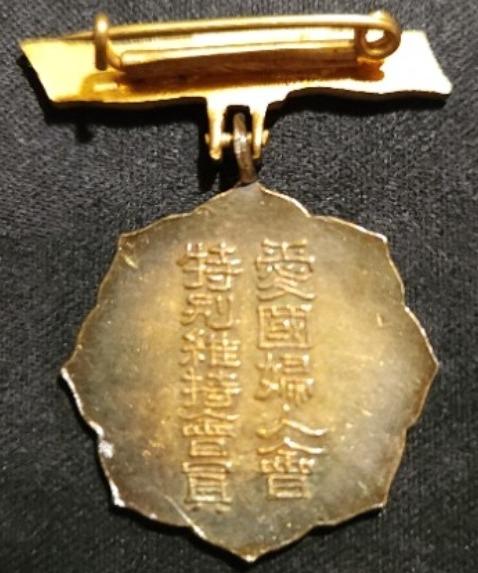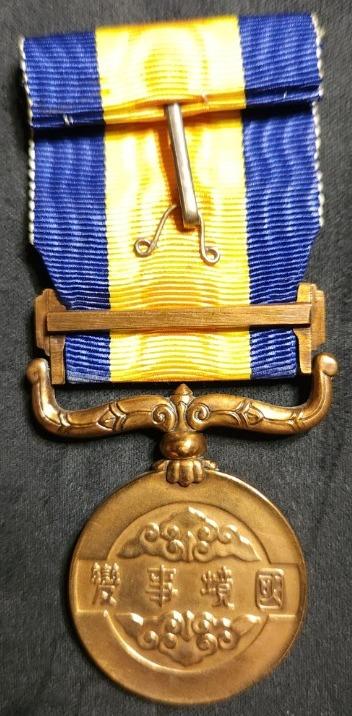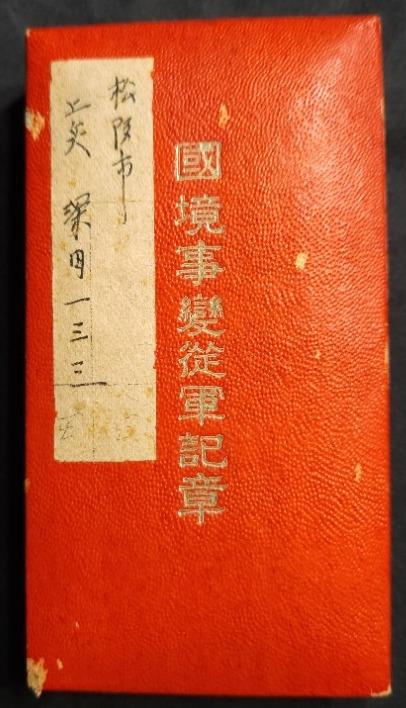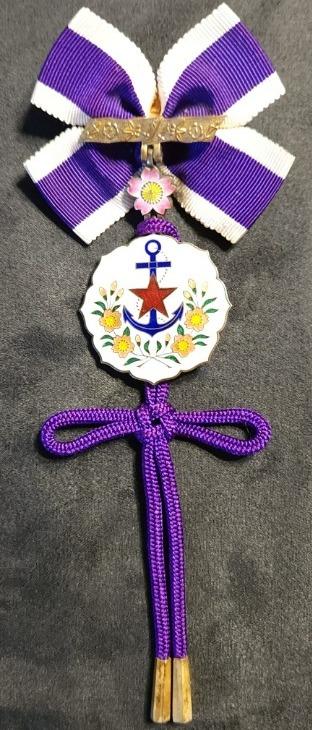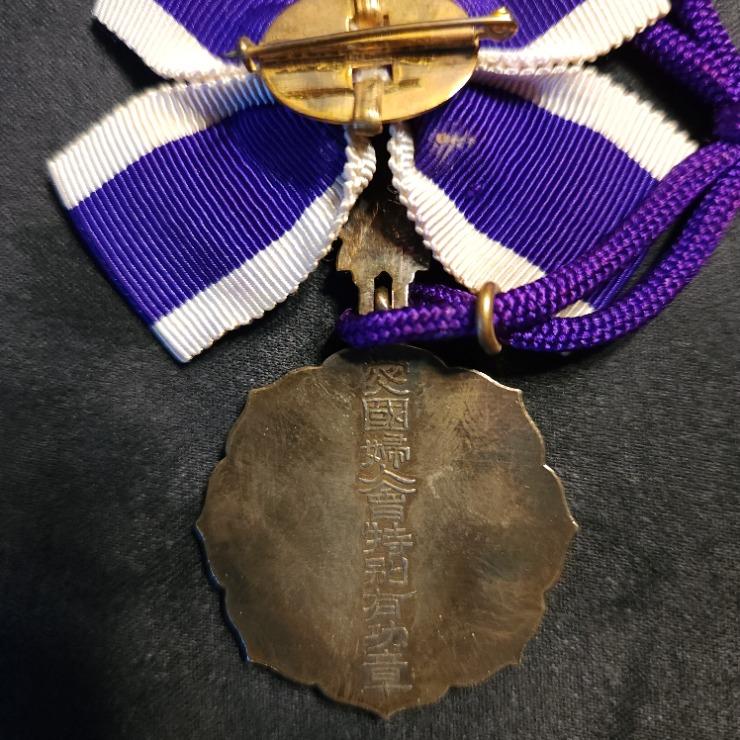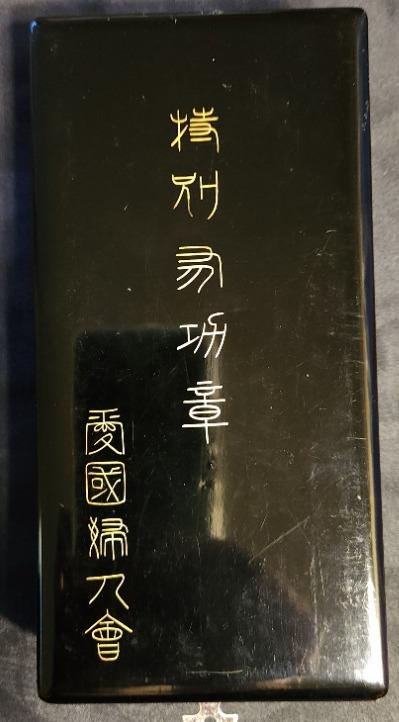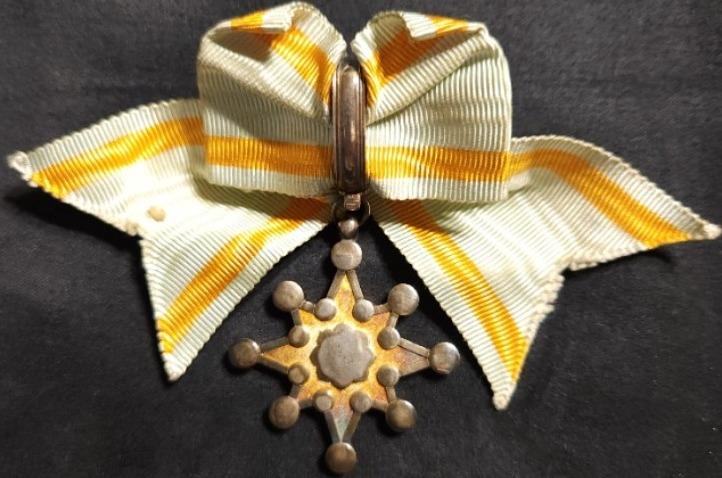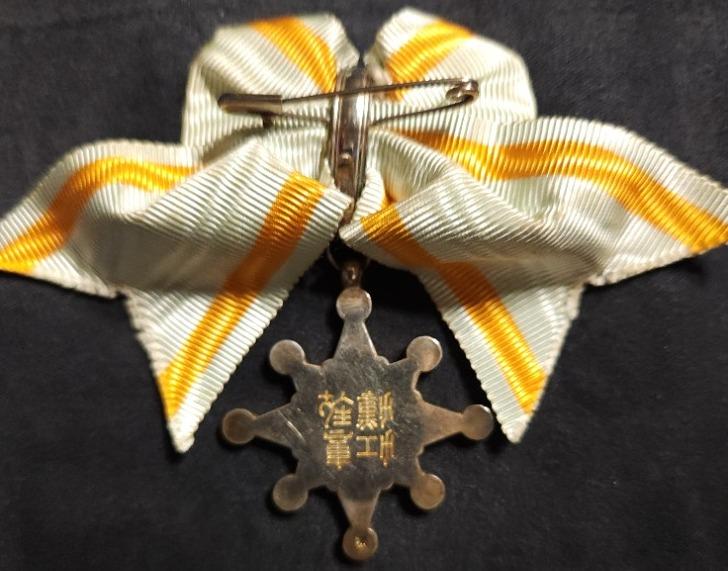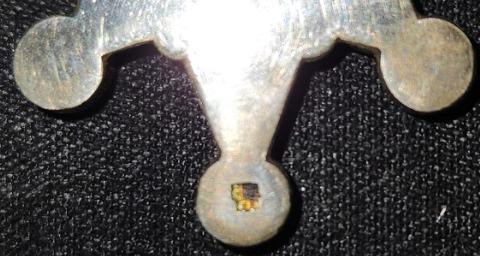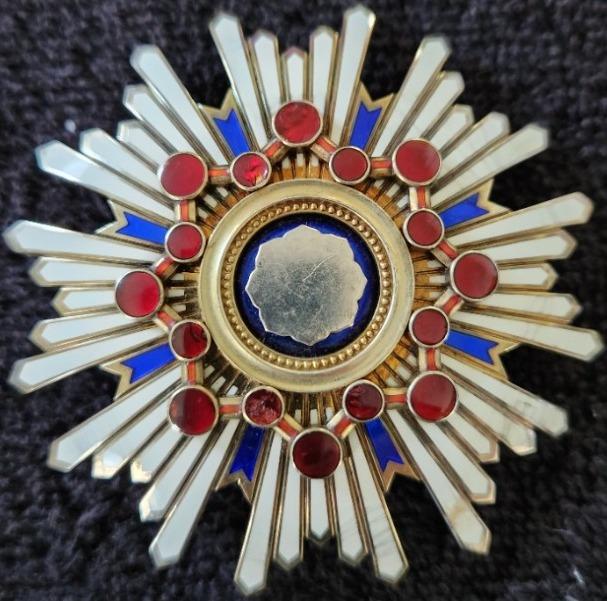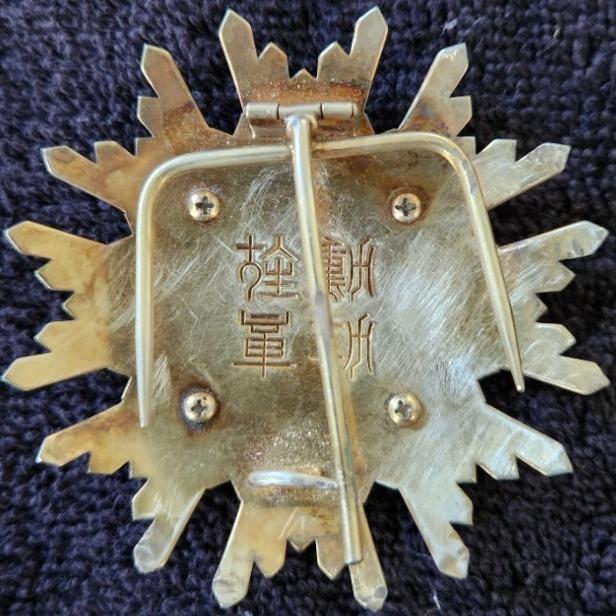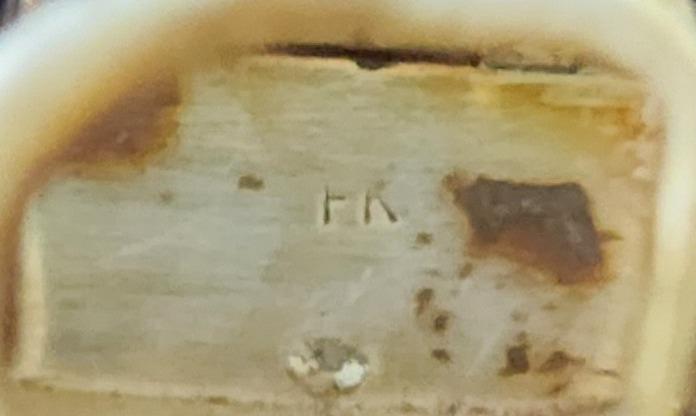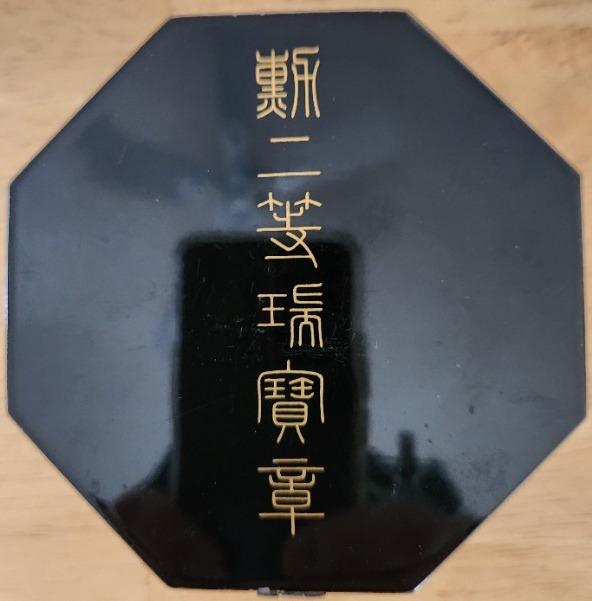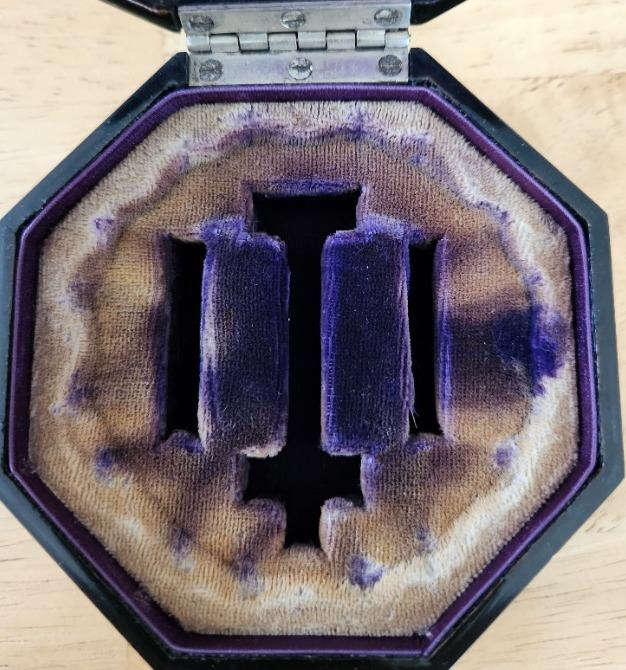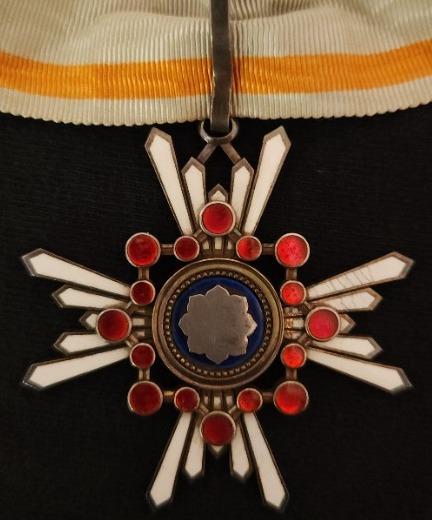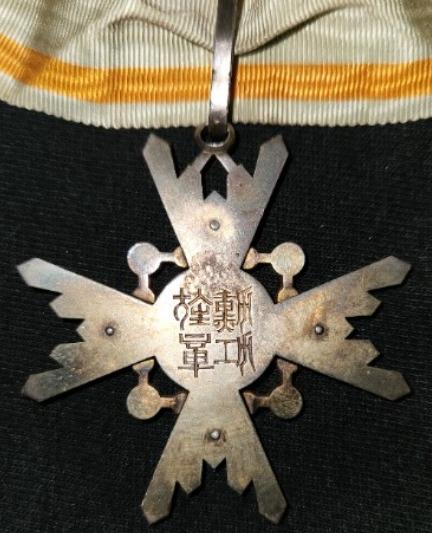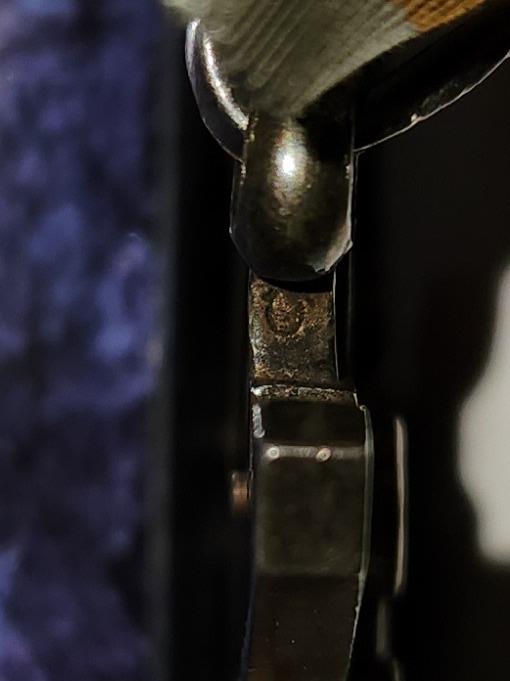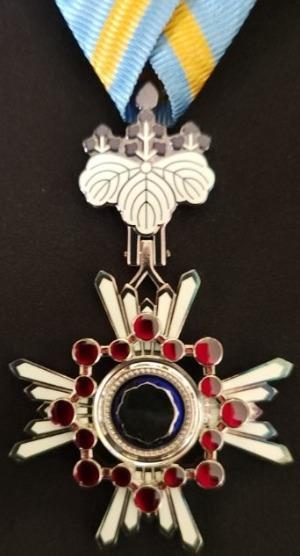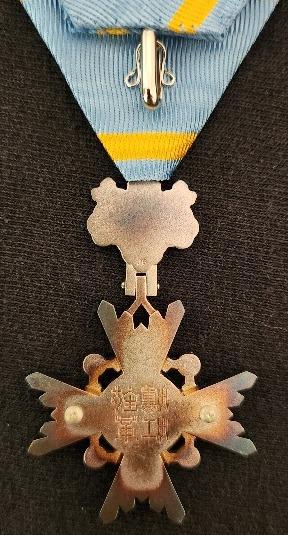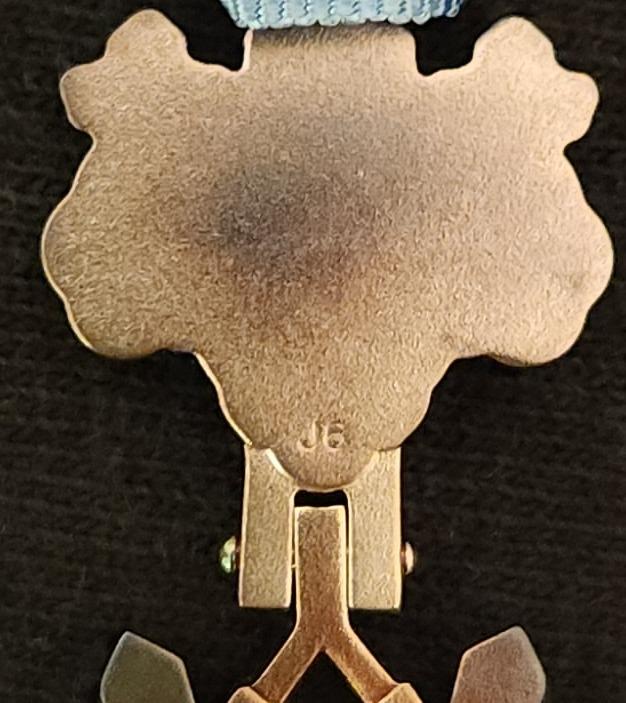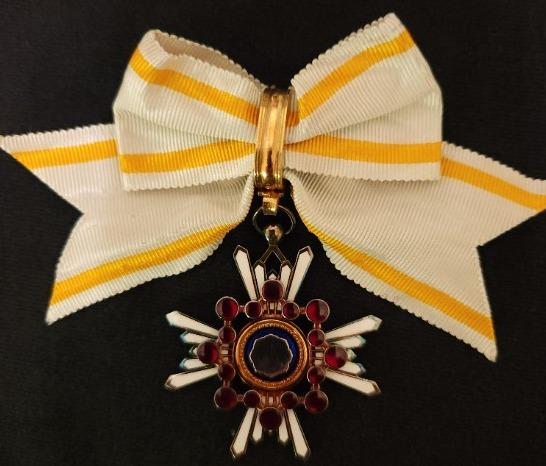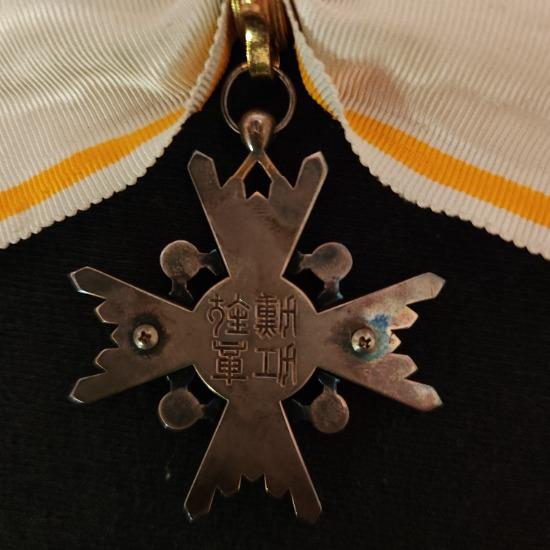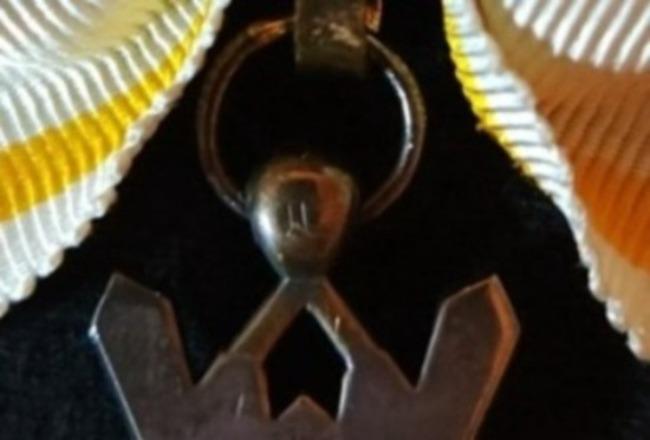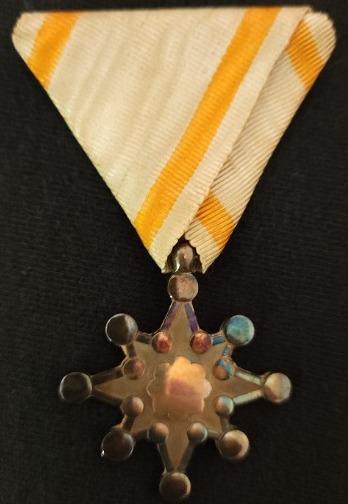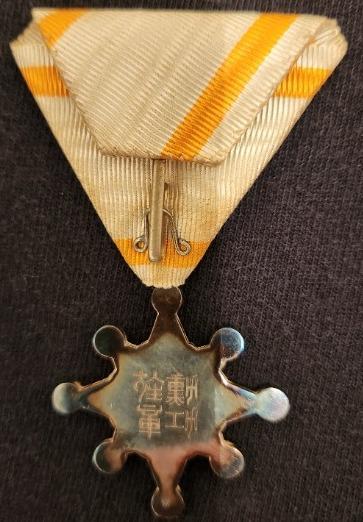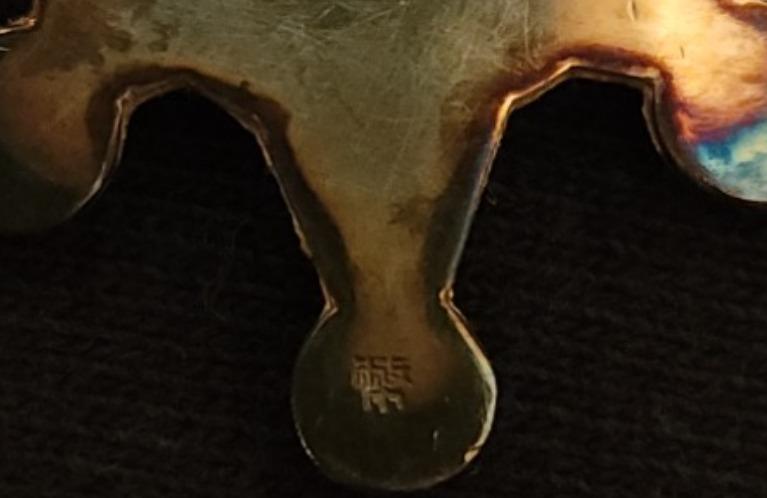-
Posts
468 -
Joined
-
Last visited
-
Days Won
20
Content Type
Profiles
Forums
Blogs
Gallery
Events
Store
Everything posted by TracA
-
Greetings, I picked-up this little gem a while ago: Order of the Rising Sun 7th class, enameled on both the obverse and reverse, with a bow lapel pin, and a double row of gold kanji on the lid. Bonus: the case is a nice chocolate color [I have read the “6th class Rising Sun in Chocolate Case” post started by JapanX on this Forum]. However, in hand the color is not even. It is lighter, almost reddish, where the flat surface of the top and bottom lids meet the curve of the sides; at some of the edges of the sides the lacquer appears even thinner and the natural wood color almost shows through; although the inner case border on the lid appears chocolate I note that the inner case border on the bottom appears either black or such a dark brown that it gives the appearance of black. I apologize, but I just cannot get good pictures of the case with my phone. Two things: I’m thinking that the chocolate to reddish to almost natural wood colors are caused by a poor lacquering job and maybe exposure to sunlight/climate. Assuming that the medal and bow lapel pin were issued together and issued in this very case, I’m thinking that the time period for this “set” is the 1930s or earlier. Thoughts? As always, I am grateful for all feedback given. Tracy Obverse: Reverse: Case lid:
-
Nick, I knew that I should have checked your website before posting. Had I done so I would have had my questions answered. I was way, way off with this one. My wrapper is for an 8th Class Sacred Treasure, not a 4th Class Rising Sun. As always, thank you! Tracy
-
Hello, I have an Order of the Rising Sun 4th Class that came in the protective wrapper used by the Japanese Mint. I have two questions about translating the kanji on the wrapper. I believe that the four kanji on the bottom left column (造幣局製) read something like “made by the bureau of the mint”. Regarding the center and upper right columns: I am fairly confident that the center column (四等章)means “fourth class badge” although the top character is, to my eyes, not very close to 四 although it could simply be highly stylized. Is my reading of the center column correct? I read the two kanji in the upper right as 瑞 寶 but I am having trouble translating them. Is the first character “luster” or “congratulations” and the second character “treasure” or “treasured item”? What would be a relatively smooth translation of those characters into English? As always, I am grateful for all of the knowledge shared. Tracy
-
As always, thank you Nick. Have a Happy New Year. Tracy
-
Greetings, Below I have two Order of the Rising Sun Meiji/Taisho lacquered cases, on the left for a 7th class and on the right for an 8th class. For those of you willing to indulge me, I have some questions: From the research that I’ve done, it appears that such inscriptions only occur on 8th and 7th class cases. Is this correct? Are there known time coordinates for such Order of the Rising Sun cases with two column inscriptions? Are two column inscriptions known only for Rising Suns, or are they known for other orders, such at the Golden Kite or Precious Crown? As always, thank you. Tracy
-
Thank you Nick! Tracy
-
…and this is my final post, for now, on this topic as this is the last Patriotic Women’s Association badge currently in my possession. The Ordinary Member Badge. A simple, silver colored badge. My example still retains most of the polished finish on the high points, which is nice. I have three questions: I have tried my best to identify and translate the kanji on the reverse of the suspension pin back bar. 掛ー襟半 ??? Something about hanging on a half collar or lapel??? I assume that the stamp on the inside of the box lid is from the workshop that manufactured the badge. Gyokuhō workshop, Tokyo? Are there different variations of this badge, like there are for the Special Supporter Member badge? Thank you to all responders. Tracy Obverse. Although it looks gilt, that is just poor lighting. It is indeed silver: Kanji on the reverse of the suspension pin back bar. 掛ー襟半 ??? Something about hanging on a half collar or lapel??? Reverse. Again, per my very limited ability: right column 通常, tsūjō (ordinary), left column 会員, kai-in (member), and center column 愛国婦人會, Aikoku Fujinkai (Women’s Patriotic Association). Again, the photo makes the badge look gilt but it is actually silver. Stamp on the inside of the box lid. Gyokuhō workshop, Tokyo?
-
Nick, Got it. Thanks. That's what I thought, just wanted to confirm. Tracy
-
Nick, I have a quick question. What do you mean by “stamp” on your website? Are you referring to subtle differences in the design on the obverse of the suspension pin back bar? I do note such differences, for example the orientation of the center bead inside the five beaded circle and the width between certain symbols. Thanks. Tracy
-
Thank you for the easy-to-use variation identifier on your website. I was able to use it and immediately identify my badge as the 5th variation. Tracy
-
Nick, Thank you, as always. I have to admit that I am in awe of the depth and breadth of your knowledge and I am very pleased that you are so willing to share it. All the best, Tracy
-
Greetings, Below is an example of the Special Contributory Member Badge. It too is a beautiful badge, with a wonderful yellow color enamel. I have a question about the design on the obverse of the pin back suspension bar: to me the symbols are not obviously chrysanthemums, paulownia flowers, or paulownia leaves. Is it just a decorative design or are there specific symbols depicted? As always, thank you. Tracy Obverse: The pin back suspension bar: is this just a decorative design or do these symbols depict something specific? Reverse. Given my very limited ability, I read the left column as 特別寄附会員, tokubetsu kifu-kin kai-in (Special Contributory Member) and the right column as 愛国婦人會, Aikoku Fujinkai (Women’s Patriotic Association):
-
Nick, Thank you, as always. Tracy
-
Greetings, Since the Manchukuo Border Incident Medal was mentioned, I figured that I would post it. Although this is a Manchukuo medal, during the time of issue Manchukuo was a puppet state of Japan. The Medal was established in 1940 and is the only Manchukuo medal with the bar suspension typical of Japanese medals (Catalano, The Imperial Ordinances for War and Commemorative Medals of Japan and Manchukuo, 4th ed. 2012). There are two different varieties of this medal, with notable differences being the size of the dove, the size of the orchid crest, and some slight differences in details of the globe. Obverse, with the inscription “War Medal” on the bar: Reverse, with the inscription “National Border Incident”: The red pasteboard case. My example has a label bearing a handwritten notation in kanji, which, per the seller, reads “Matsusaka City, Superior Private Fukada”:
-
Greetings, I have recently branched out into Patriotic Women’s Association badges and I’ll be posting a series of questions as well as pictures. My two main sources of information are Paul L. Murphy and Steven L. Ackley’s In the Name of a Living God. The non-government badges and medals of Imperial Japan, including Police, Fire Brigade, Red Cross, Veteran, and Patriotic Groups. San Ramon, CA: Falcon Books, 2005 and the Medals of Asia website (https://asiamedals.info/threads/history-and-badges-of-greater-japan-womens-patriotic-association.23765/). My first offering is a Special Merit Badge, which I find to be a gorgeous piece of work. For now I have two questions: (1) Medals of Asia has a picture of an original chart of badges (see link above) and mentions that there were both donation requirements and requirements regarding bringing in new members. The new member requirements are listed. Any idea what the donation requirements were for Special, 1st Class, 2nd Class, and 3rd Class Merit Badges? (2) The cords: red group, white group, and purple group. Any idea what the awarding, if they were indeed awarded, of a cord denoted? Any idea if the color of the cord denoted something specific? As always, thank you responders for sharing your knowledge. Tracy Obverse: Reverse, and inscription to the best of my very, very limited ability: 愛国婦人會特別労功章, Aikoku Fujinkai tokubetsu kōrō bajji, Women’s Patriotic Association Special Merit Badge: Lacquered case with the reverse inscription in what I take to be stylized kanji:
-
Despite thinking that my Order of the Sacred Treasure 2nd Class breast star was my last post of an order or decoration with a hallmark, this wonderful piece arrived yesterday. I was delighted to discover that it has a hallmark. Order of the Sacred Treasure 8th class for a female. Just like the Order of the Sacred Treasure 8th class for males that I posted about 10 days ago, this one also has the hallmark 幣 (hei). Enjoy. Tracy Obverse: Reverse: Hallmark 幣 (hei) on the reverse of the 6h bead. Unfortunately I could not get a very clear photo of the hallmark with my phone:
-
As always, thank you Nick. Tracy
-
Well, I guess that my last post wasn’t my final installment on this topic. I forgot that I have one more award with a hallmark. Order of the Sacred Treasure 2nd Class breast star with four screws and trident pin construction. (At least I’m considering it a second class breast star instead of an orphaned Grand Cordon breast star. It came in a 2nd Class lacquered case, and I am assuming that it was the case of issue). The hallmark is located on the trident pin fastener and is, I believe, FK, although it was not fully struck so I cannot be 100% sure. Obverse: Reverse: Hallmark FK (?): Case: Medalbed:
-
Thank you Nick. I am honored to have a piece that made your database. 😃 Tracy
-
This is my final installment of orders that I own with hallmarks, or at least my final installment until I purchase another such order. This one is my favorite: Order of the Sacred Treasure 3rd Class, four rivets on the reverse in the usual location, and the hallmark ひ (hiragana “HI”) on the side of the bar attached to the leftmost short ray (just before 12h) and the loop through which the cravat loop runs. Obverse: Reverse: Hallmark ひ (hiragana “HI”):
-
Thank you Nick. This installment of orders that I own with hallmarks is a post-2003 reform Order of the Sacred Treasure Silver Rays. At the 6 o’clock location on the reverse of the paulownia leaves is the hallmark J6. Although it might look like an 8 in my crappy photo, it is a 6. Tracy Obverse: Reverse: Hallmark J6:
-
Nick, Thank you for the insight. Any guess on what the hallmark would have or should have been, given that it wasn’t punched well enough? Tracy
-
Today’s post with a hallmark: an Order of the Sacred Treasure, 5th class, for females. There are two screws on the reverse, one at the three o’clock and one at the nine o’clock. The hallmark “ll” is stamped on the reverse of the suspension ball. I note that on the Medals of Asia webpage for two letter and letter/digit marks (https://asiamedals.info/threads/two-letter-and-letter-digit-marks-on-japanese-orders-and-medals.13720/) there is no entry for “ll”. Nonetheless, per that webpage these marks began to occur in 1979 so I date this piece to 1979 or later. I need to work on my photos. They are a little dark. Obverse: Reverse: Hallmark “ll” on the rear of the suspension ball:
-
…and another one. This time an Order of the Sacred Treasure 8th class with the 幣 (hei) hallmark. Per the Medals of Asia website (https://asiamedals.info/threads/mark-on-japanese-order-who-and-when.15113/) this most likely comes from 造幣局 Zouheikyoku/mint. The known time coordinates are between December 11, 1931 and September 4, 1933. Obverse: Reverse: Hallmark 幣 (hei):
-
Nick, As always, thank you for generously sharing your vast and deep knowledge of this subject matter. It is very much appreciated. Your website is simply amazing. Tracy

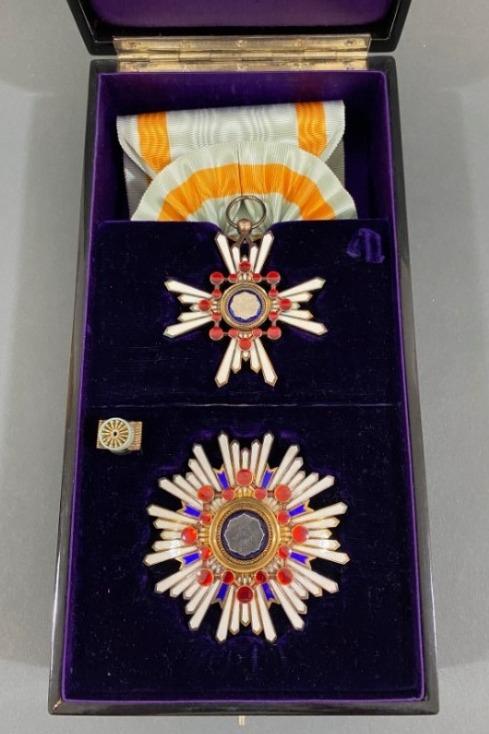
(1).thumb.jpg.38cff8cd9c5d55311a4208b0a83448ba.jpg)
